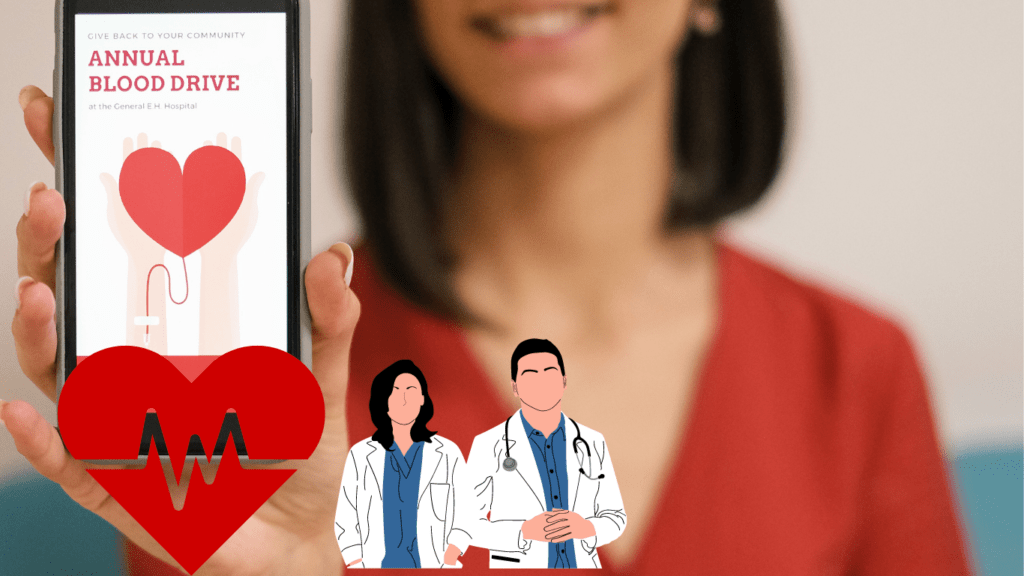The Rise of Chronic Conditions Globally
Chronic conditions are long-term health issues that require ongoing medical attention and management.
The prevalence of chronic diseases is on the rise worldwide, with millions of people affected by conditions such as:
- diabetes
- cardiovascular diseases
- hypertension
- respiratory disorders.
These health challenges not only impact individuals’ quality of life but also pose significant economic burdens on healthcare systems globally.
As someone delving into the realm of chronic disease management, I find it crucial to recognize the increasing burden these conditions place on individuals, families, and societies.
The escalating prevalence of chronic diseases emphasizes the need for innovative solutions and technological advancements to enhance care delivery and improve outcomes for patients worldwide.
Key Challenges in Managing Chronic Diseases
Effectively managing chronic diseases presents various challenges for individuals, healthcare providers, and policymakers alike.
One of the primary hurdles is the complex nature of these conditions, which often require continuous monitoring, lifestyle modifications, and adherence to treatment protocols.
Moreover, the lack of real-time data and personalized interventions can impede the timely management of chronic illnesses, leading to complications and worsening health outcomes.
In my exploration of the landscape of chronic disease management, I’ve identified key challenges, such as:
- patient engagement
- care coordination
- the integration of disparate healthcare services.
Addressing these challenges demands a multidisciplinary approach that leverages technology to facilitate seamless communication, data sharing, and decision-making among healthcare stakeholders.
By acknowledging and tackling these obstacles head-on, we can pave the way for more effective and patient-centered chronic disease management strategies.
The Role of Technology in Healthcare
1. Current Technological Innovations in Healthcare
In healthcare today, technology is playing a pivotal role in transforming how chronic diseases are managed.
Wearable devices, such as smartwatches and fitness trackers, offer real-time health data tracking, enabling individuals to monitor their vital signs and activity levels effortlessly.
With the advent of mobile health apps, individuals can access personalized health information, track medication schedules, and receive reminders for appointments, fostering greater engagement in their care.
Telemedicine consultations have revolutionized healthcare delivery by providing convenient access to healthcare providers remotely.
Patients can consult with doctors, receive medical advice, and even have virtual check-ups from the comfort of their homes, reducing the need for in-person visits and enhancing the efficiency of healthcare services.
Remote monitoring systems allow healthcare providers to keep a constant check on patients with chronic conditions, detecting any deviations from normal health parameters promptly.
By remotely monitoring patients’ health status, healthcare professionals can intervene early, prevent complications, and provide timely interventions, leading to improved health outcomes and better quality of life for individuals with chronic diseases.
2. Benefits of Technology in Chronic Disease Management
The integration of technology in chronic disease management offers a myriad of benefits. One significant advantage is the ability to deliver personalized care tailored to individual needs.
Through the use of health tracking tools and wearable devices, healthcare providers can gather real-time data on patients’ health status, enabling them to customize treatment plans and interventions based on specific health metrics.
This personalized approach enhances the effectiveness of treatments and improves patients’ adherence to their care plans.Moreover, technology facilitates seamless communication and collaboration among healthcare teams, patients, and caregivers.
Electronic health records enable efficient data sharing, ensuring that all members of the care team are well-informed about patients’ medical histories, treatment plans, and progress.
This coordination enhances the continuity of care, reduces the likelihood of medical errors, and promotes better health outcomes for individuals managing chronic diseases.
Additionally, the use of telemedicine and remote monitoring systems reduces healthcare costs by minimizing the need for frequent hospital visits and emergency room admissions.
By remotely monitoring patients’ health status and providing timely interventions, healthcare providers can prevent complications, reduce hospital readmissions, and optimize resource utilization, ultimately leading to cost savings for healthcare systems and improved patient outcomes.
Wearable Devices and Mobile Health Applications

Monitoring Vital Signs and Health Parameters
In chronic disease management, wearable devices and mobile health applications play a crucial role in monitoring vital signs and health parameters.
These technologies allow for continuous tracking of essential metrics like:
- heart rate
- blood pressure
- blood glucose levels
- physical activity.
By collecting real-time data, individuals and healthcare providers can gain valuable insights into the patient’s health status and trends.
For example, a diabetic patient can use a wearable device to monitor their blood sugar levels throughout the day and receive alerts for any deviations from the target range.
This proactive approach enables early intervention and adjustments to the treatment plan, leading to better disease control and improved outcomes.
Enhancing Patient Engagement and Self-Management
Wearable devices and mobile health applications are instrumental in enhancing patient engagement and promoting self-management of chronic conditions.
These technologies empower individuals to actively participate in their care by providing access to personalized health information, medication reminders, lifestyle recommendations, and progress tracking tools.
For instance, a patient with hypertension can use a mobile app to record their daily blood pressure readings, track their medication adherence, and receive educational resources on heart-healthy habits.
By fostering greater patient engagement, these tools promote adherence to treatment plans, encourage healthy behaviors, and ultimately improve the overall quality of life for individuals living with chronic diseases.
Telemedicine and Remote Patient Monitoring
Expanding Access to Care for Chronic Disease Patients
Technology plays a crucial role in expanding access to care for individuals managing chronic diseases.
Through telemedicine, patients can consult healthcare providers remotely, eliminating geographical barriers and ensuring timely medical attention.
This remote interaction allows patients to receive essential healthcare services without the need for in-person visits, particularly beneficial for those with mobility limitations or residing in rural areas where access to specialist care may be limited.
By leveraging telemedicine, individuals with chronic conditions can connect with healthcare professionals, monitor their health status, and receive necessary guidance for managing their illnesses effectively.
Reducing Healthcare Costs and Hospital Readmissions
The integration of remote patient monitoring systems in chronic disease management not only enhances patient care but also contributes to reducing healthcare costs and hospital readmissions.
By continuously monitoring vital signs and health parameters from the comfort of their homes, patients can detect potential health issues early, leading to proactive interventions and preventing escalating medical emergencies that could result in hospitalizations.
Additionally, remote patient monitoring helps healthcare providers optimize treatment plans, identify trends in patients’ health data, and intervene promptly when deviations from the norm occur.
This proactive approach not only improves patient outcomes but also reduces the financial burden on the healthcare system by minimizing unnecessary hospital visits and readmissions.
Big Data and Artificial Intelligence in Chronic Care
Predictive Analytics in Patient Care
In chronic care management, predictive analytics play a crucial role in forecasting potential health issues based on historical data and ongoing monitoring.
By analyzing patterns and trends in patient data, healthcare providers can anticipate complications before they arise.
This proactive approach enables early interventions, preventing exacerbations of chronic conditions and reducing the risk of hospitalizations.
Utilizing predictive analytics not only enhances patient outcomes but also optimizes resource allocation in healthcare settings.
Personalizing Treatment Plans
Personalizing treatment plans is essential in chronic disease management to address the unique needs of individual patients.
Leveraging big data and artificial intelligence allows healthcare professionals to tailor interventions based on a patient’s specific health data, preferences, and response to treatments.
By utilizing advanced algorithms, personalized treatment plans can be created to optimize outcomes and improve patient adherence.
This tailored approach to care enhances patient satisfaction, engagement, and overall quality of life, leading to better long-term management of chronic conditions.
Ethical and Privacy Considerations
Data Security in Health Technology
Ensuring robust data security measures in health technology is crucial to safeguarding sensitive patient information.
As technology plays a pivotal role in managing chronic diseases, it’s essential to prioritize data security to prevent unauthorized access or breaches.
Implementing encryption protocols and secure data storage practices can help protect patient data from cyber threats and maintain confidentiality.
Healthcare organizations must adhere to strict regulatory standards such as HIPAA (Health Insurance Portability and Accountability Act) to maintain patient privacy and data security.
Compliance with these regulations is imperative in the collection, storage, and transmission of patient health information.
By adopting stringent security measures and regular audits, healthcare providers can mitigate risks and uphold the trust of patients relying on technology for chronic disease management.
Balancing Technology and Patient Privacy
Maintaining a delicate balance between leveraging technology for improved healthcare outcomes and respecting patient privacy is essential.
While technology offers innovative solutions for managing chronic diseases, it also raises concerns about data privacy and ethical considerations.
Healthcare providers must prioritize obtaining informed consent from patients before implementing any technology-driven interventions or sharing their health data.
Respecting patient autonomy and confidentiality is paramount when using technology for chronic disease management.
Transparent communication about data usage, sharing practices, and security measures is key to building trust with patients.
Striking a balance between harnessing the benefits of technology and protecting patient privacy fosters a sustainable and ethical approach to utilizing health technology in chronic care.



